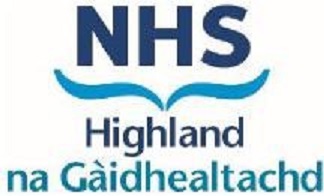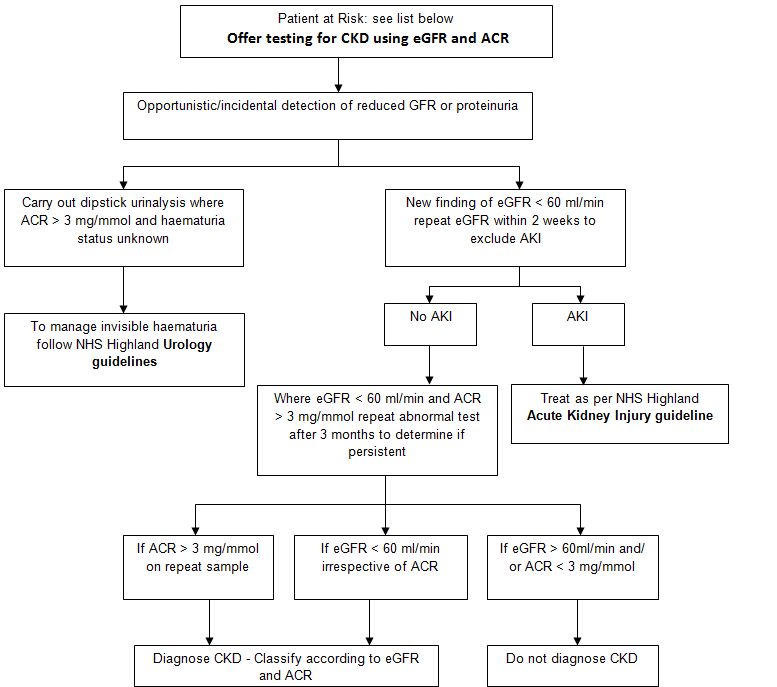- Do not use reagent sticks to diagnose proteinuria
- Urine albumin:creatinine ratio (ACR) is more sensitive than urine protein:creatinine ratio at low levels of proteinuria
- ACR will be used for screening. A normal result is ACR < 3 mg/mmol
- Proteinuria is not an indication for urine culture in the absence of symptoms of urinary tract infection (UTI)
- In patients with symptomatic UTI the test for proteinuria should be delayed until after UTI resolved
- If urine ACR > 70 mg/mmol, a protein:creatinine ratio will be checked
Chronic Kidney Disease: Screening and Diagnosis (Guidelines)

Warning

Patients at risk:
- Diabetes
- Hypertension
- Acute kidney injury (minor patients for CKD for at least 3 years after Acute Kidney Injury (AKI), even if serum creatinine returned to baseline)
- Cardiovascular disease
- Structural renal tract disease, recurrent renal calculi, prostatic hypertrophy
- Multisystem disease with potential kidney involvement - e.g. Systemic lupus erythematosus (SLE)
- Family history of End stage renal disease (ESRD) (GFR category CKD5) or hereditary kidney disease
- Opportunistic detection of haematuria
- Nephrotoxic drugs - lithium, NSAIDs, ACEI, ARBs, ciclosporin, tacrolimus
Associated guidance:
- When testing for haematuria use reagent strips rather than urine microscopy.
- Presence of haematuria in 2 out of 3 reagent strip tests confirms persistent invisible haematuria
- Persistent invisible haematuria with or without proteinuria should prompt investigation for urological malignancy in those aged over 50
- Persistent invisible haematuria with proteinuria should be followed up annually with repeat testing for haematuria, ACR, GFR and BP as long as haematuria persists.
Frequency for monitoring of GFR (number of times per year, by GFR and ACR category for people with or at risk of CKD
| GFR Category | ACR Categories (mg/mmol) A1 <3 normal to mildly increased |
ACR Categories (mg/mmol) A2 3-30 moderately increased |
ACR Categories (mg/mmol) A3 >30 severly increased |
| G1 >90 normal and high | <1 | 1 | >1 |
| G2 60-89 mild reduction related to normal range for young adult | <1 | 1 | >1 |
| G3a 45-59 mild-moderate reduction | 1 | 1 | 2 |
| G3b 30-44 moderate-severe reduction | <2 | 2 | >2 |
| G4 15-29 severe reduction | 2 | 2 | 3 |
| G5 <15 kidney failure | 4 | >4 | >4 |
This should be tailored according to:
- The underlying cause of CKD
- Past patterns of eGFR and ACR (but be aware CKD progression is often non linear)
- Co-morbidities especially heart failure
- Changes to treatment (such as ACEI/ARBs, NSAIDs, diuretics)
| Abbreviation | Meaning |
| CKD | Chronic kidney disease |
| eGFR | Estimated gomerular filtration rate |
| ACR | Urine albumin to creatinine ratio |
| AKI | Acute kidney injury |
| ACEI | Angiotensin converting enzyme inhibitors |
| NSAIDs | Nonsteroidal anti-inflammatory drugs |
| ARBs | Angiotensin II receptor blockers |
